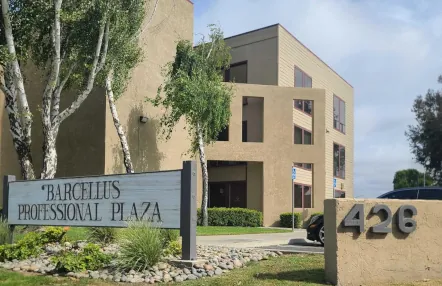Gum Disease Treatment in Santa Barbara, CA
Gum disease, also called periodontal disease, affects many of our patients. At Pathway Dental Group, we provide periodontal services that treat all stages of gum disease to support your oral health.
Treat Gum Disease and Periodontal Disease at Pathway Dental Group!
Our team is committed to promptly addressing gum infections to prevent more severe problems. If we detect an issue with your gums, we will address it immediately. We often perform scaling and root planing, a two-step deep cleaning procedure. First, we remove tartar buildup on the roots of your teeth below your gumline. Then, we smooth the surface of the tooth roots to facilitate reattachment to the gums.
Additionally, we can prescribe antibiotics to eliminate any remaining bacteria. If you feel anxious about treatment, we can provide dental sedation to ensure a pain-free procedure. Don’t wait for the signs of early-stage gum disease (gingivitis) to appear. Instead, be proactive and visit us at Pathway Dental Group for a routine exam and gum disease treatment near Santa Barbara, CA.
-
What are the signs of periodontal disease or gum disease?
Gingivitis is the earliest sign of gum disease. You may notice minor redness, swelling or some bleeding when you brush or floss or have your teeth cleaned at the dentist. Left untreated, this infection can cause the gums to pull away from the teeth. The spaces between the teeth and gums are known as periodontal pockets. The pockets can fill up with bacteria and other substances.
If gum disease extends to the jawbone or connective tissues of the teeth, the bone can deteriorate, sometimes leading to tooth loss.
The most common symptoms of periodontal disease include:
- Bad breath
- Bleeding when you brush and floss
- Deep pockets under your gums
- Gaps between the teeth
- Gum recession
- Heavy tartar buildup
- “Long teeth”
- Loose or moving teeth
- Soreness when chewing or biting
- Swollen, red gums
- Visible bone loss on X-rays
Note that if you smoke, vape or use other tobacco products, you may not have the same gum disease symptoms. Your gum tissues may not swell or bleed, even if there is gum disease.
-
How do you treat gum disease?
Treatment for gum disease depends on how advanced your condition is. We usually focus on two types of treatment:
- Scaling and root planning — Standard treatments for periodontitis, especially in its early to moderate stages. Your dentist accesses the areas below the gum line and between the teeth to remove any buildup of plaque, tartar and bacteria. Then they smooth out root surfaces to prevent future buildup. Your gums should start healing and reattach themselves to the teeth.
- Bone grafting — Treatment that’s often required when bacteria and plaque reach the jawbone, causing some deterioration and decay. Your dentist surgically gets to the jawbone to apply proteins and artificial bone-like material to the decayed area. The process encourages new bone growth. Many people need bone grafting to strengthen the jawbone before they get dental implants to replace missing teeth.
-
How do I know if I have periodontal disease?
Look out for red and swollen gums that bleed when you floss and brush. These symptoms are the earliest signs of gum disease. Advanced signs of gum disease include tooth loss and root exposure.
At your routine dental exam, we measure how deep the pockets are around your teeth to see if you have gum disease and how advanced it is and find appropriate treatment.
-
What causes gum disease?
There are three typical causes of gum disease:
- Chronic periodontitis (most common) — Occurs due to ineffective oral hygiene. Bacteria accumulate beneath the gum line, turning into tartar, a hard substance that requires a professional cleaning to remove. When left untreated, the gums become inflamed and damaged, leading to bone loss.
- Aggressive periodontitis — Likely a genetic condition that shows up in families and advances quickly.
- Necrotizing periodontal disease (rare) — Occurs in people with immune issues or chronic diseases. The soft tissues and bone waste away from a lack of blood flow to the area.
-
What is gum recession?
Gum recession is when your gums pull back from your teeth. Receding gums affects about 50% of Americans over age 50 but can impact younger people, too. You may be more likely to have gum recession because of family history (for example, having thinner gums). Environmental factors like aggressive brushing, trauma, surgery, or poor-fitting partials can lead to recession.
Treatment of Gum Recession
You may have gum recession if you experience sensitivity or pain when brushing or flossing or if your tooth looks long. To treat gum recession, make an appointment with your dentist. We’ll look and may patch over the receding area by grafting a small amount of skin from your palate. This treatment protects the tooth from further damage and is a relatively easy procedure.
More Questions?
If you have any questions about periodontal disease (gum disease) treatment please contact our office and we will be happy to answer any questions.








